R136a1 is the most massive and luminous star ever discovered in the Universe. It is also one of the hottest stars, and it is located in the Large Magellanic Cloud.
Key Facts & Summary
- R136a1 is approximately 163.000 light-years away from Earth, and it is estimated to have around 315 times the mass of our Sun.
- R136a1 is almost 9 million times more luminous than the Sun.
- R136a1 is a Wolf-Rayet-Hypergiant type of star, which is a rare heterogeneous type of stars with unusual spectra showing prominent broad emission lines of ionized helium and highly ionized nitrogen or carbon.
- R136a1’s temperature is estimated to be around 53.000 K / 53.000 C / 95.000 F, or about 10 times hotter than the Sun.
- It has a diameter of about 30 million miles / 48 million kilometers – about 35 times bigger than our Sun.
- Estimates place R136a1 at around 1 million years old.
- It has a radius of about 15 million miles / 24 million kilometers.
- Due to its nature, it will explode into a supernova before its core collapses and it will become a black hole.
- It is believed that R136a1 was once even more massive but lost around 15% of its mass.
- R136a1 is located in the R136 star cluster, which is located in the Large Magellanic Cloud – a galaxy satellite of the Milky Way.
- The star gained its title as the most massive and luminous star ever discovered in 2010.
- R136a1 radiates more energy in 5 seconds than our Sun in an entire Earth year.
- Though it is the most massive and luminous star ever discovered, this does not mean it is the biggest in size.
- You can fit well over 4 billion Suns into R136a1.
- R136a1 produces about 58 times more ultraviolet light than normal light.
- R136a1 was at first named RMC 136a1.
R136a1 was first discovered in 1960 by a team of astronomers at the Pretoria’s Redcliffe Observatory. They observed the Tarantula Nebula and a central star captured their attention. They cataloged it RMC 136.
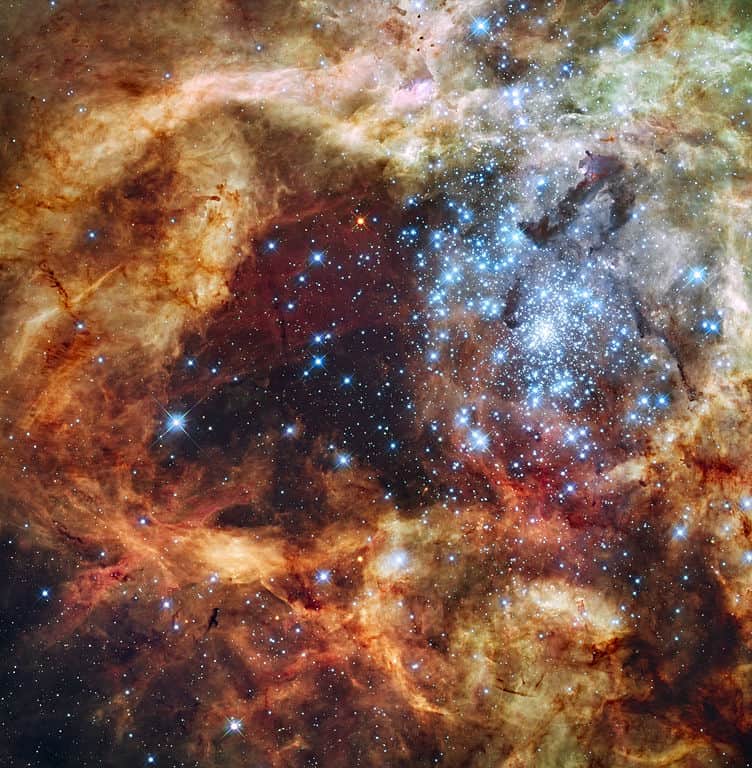
Later, in 1979 astronomers used ESO’s 3.6-meter telescope and concluded that RMC 136 was actually made of three stars that were named R136a, R136b, and R136c. But this was not the case, in 1985 astronomers Weigelt and Beiber made use of speckle interferometry and realized that they discovered 8 stars with R136a1 being the brightest.
This was all going to change when the Hubble Space Telescope was launched. With the help of this telescope, it was concluded that RMC 136 was a cluster of 200 very luminous stars. In 2010 it was officially confirmed: R136a1 was the brightest and the most luminous star in the RMC 136 star cluster.
Distance – Location
R136a1 is at a distance of 163.000 light-years away from Earth or 50 kiloparsecs. It is in a sense our neighbor, sitting in the Dorado constellation of Milky Way’s satellite galaxy the Large Magellanic Cloud. This galaxy orbits our Milky Way Galaxy.
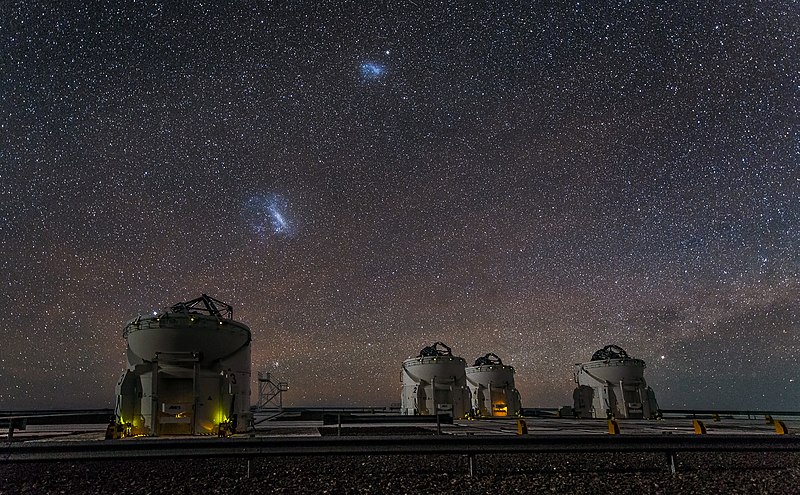
Size – Mass – Luminosity
R136a1 has a diameter of about 30 million miles / 48 million kilometers – about 35 times bigger than our Sun and has a radius of about 15 million miles / 24 million kilometers.
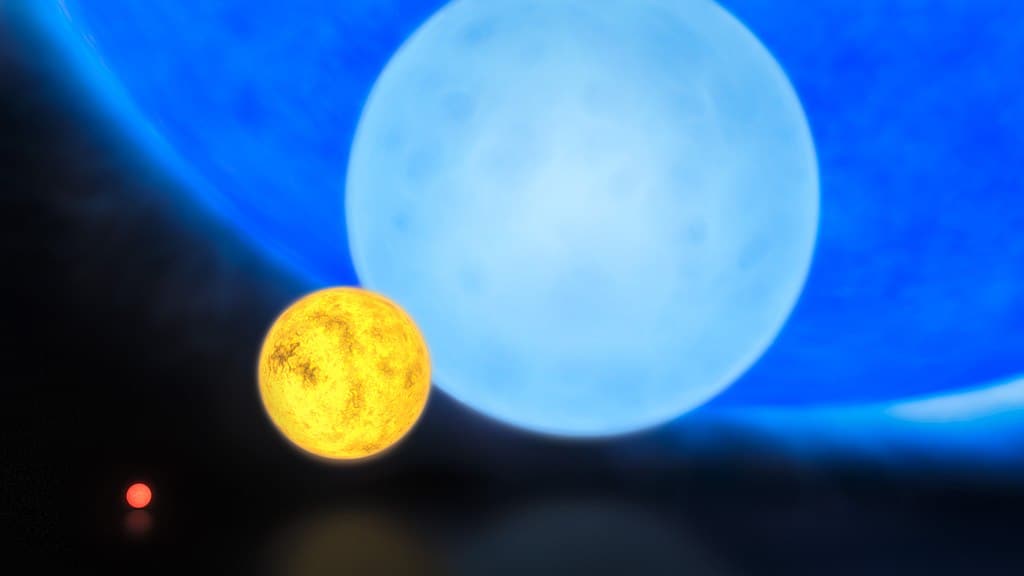
Its mass is about 315 times the mass of our Sun, being 9 million times more luminous than our star. About 4 billion Suns could fit inside R136a1. This massive star radiates more energy in 5 seconds than our star does in 1 year, and also loses a billion times more mass than the Sun in one year. To perceive R136a1’s outline, a good telescopic magnification is required as it is five orders of magnitude fainter.
Its cluster can be seen under mild magnification in the far southern celestial hemisphere at a magnitude of 7.25. There are many other stars in the R136 cluster which have 100 times the mass of the sun but R136a1 is far brighter than them. It is also 10 times hotter than our Sun.
Formation
R136a1 is quite a young star, at around 1 million years old. This can be explained since its location in the Large Magellanic Cloud is an active star-forming location. Stars form out of gigantic, rarefied interstellar clouds of dust and gas. R136a1 is predominantly made up of hydrogen and helium and since it’s a Wolf-Rayet star, it carries high amounts of other heavy elements.
Classification
R136a1 is a very high luminosity WN5h star. It is on the extreme top left corner of the Hertzsprung-Russell diagram. A Wolf-Rayet star is distinguished by strong and broad emission lines in its spectrum that includes: ionized nitrogen, helium, carbon, oxygen and occasionally silicon.
The hydrogen lines are usually weak or absent. WNh stars are very luminous and massive, with hydrogen still burning at their cores. The emission spectrum is produced in a powerful dense stellar wind.
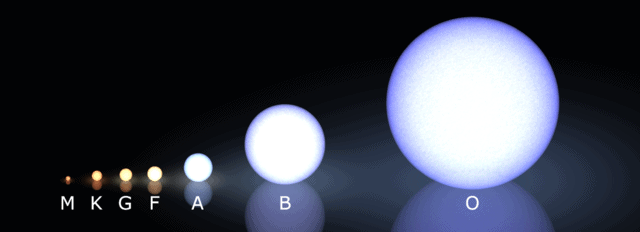
R136a1 is actually losing mass at a rate of 3.21 x 1028 kg/s. Some scientists believe it has already lost about 50 solar masses already. The high speed of the stellar wind is one of the reasons for this. The speed is caused by extremely intense electromagnetic radiation emanating from the photosphere.
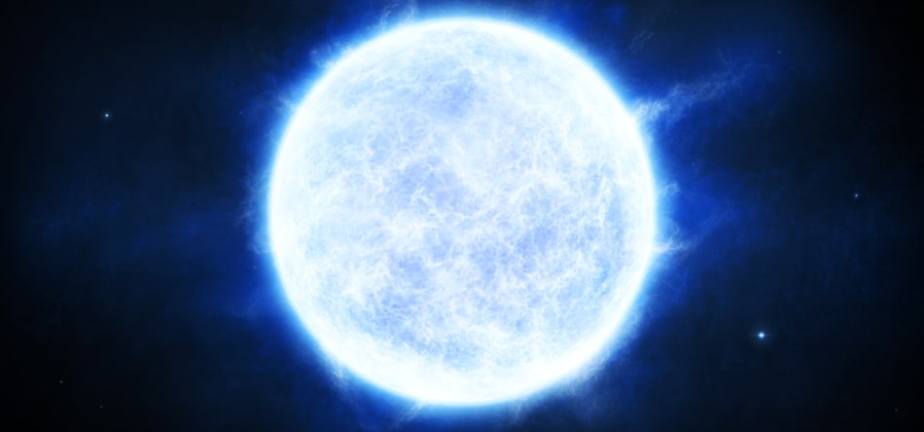
The material from the photosphere accelerates away with a force stronger than what it’s surface gravitational pull is capable of retaining back.
Future
Due to its massive size and intense luminosity R136a1 will burn out its fuel very quickly. Given its nature, it will inevitably become either a black hole or a neutron star after suffering a type lc core-collapse supernova. But because of its enormous mass, the most likely outcome is that it will become a black hole.
Did you know?
- R136a1 supplies around 7% of the ionizing flux of the entire 30 Doradus region.
- R136a1’s dimensions are far smaller than the largest stars: red supergiants. They are several hundred times bigger than R136a1 but not as massive.
- Despite the large mass and modest dimensions, R136a1 has an average density of around 1% of the Sun’s. At about 14 kg/m3, it is over 10 times denser than Earth’s atmosphere at sea level.
- The rotation rate of R136a1 cannot be measured directly since the photosphere is hidden by the dense stellar wind.
- If R136a1 were placed in the Solar System where our Sun is, Earth will most probably get destroyed in under a day. The remaining planets will get destroyed, most likely in about a week.
- If it would replace our Sun, it would outshine it by about 94.000 times.
Sources:
Image source:
- https://upload.wikimedia.org/wikipedia/commons/thumb/2/25/Grand_star-forming_region_R136_in_NGC_2070_%28captured_by_the_Hubble_Space_Telescope%29.jpg/752px-Grand_star-forming_region_R136_in_NGC_2070_%28captured_by_the_Hubble_Space_Telescope%29.jpg
- https://en.wikipedia.org/wiki/Large_Magellanic_Cloud#/media/File:A_Starry_Combination.jpg
- https://upload.wikimedia.org/wikipedia/commons/thumb/d/df/Comparison_of_the_sizes_of_a_red_dwarf%2C_the_Sun%2C_a_B-type_main_sequence_star%2C_and_R136a1.jpg/1024px-Comparison_of_the_sizes_of_a_red_dwarf%2C_the_Sun%2C_a_B-type_main_sequence_star%2C_and_R136a1.jpg
- https://upload.wikimedia.org/wikipedia/commons/thumb/8/8b/Morgan-Keenan_spectral_classification.png/640px-Morgan-Keenan_spectral_classification.png
- https://i0.wp.com/factslegend.org/wp-content/uploads/2015/07/r136a1-star.jpg?zoom=1.375&fit=950%2C444&ssl=1
